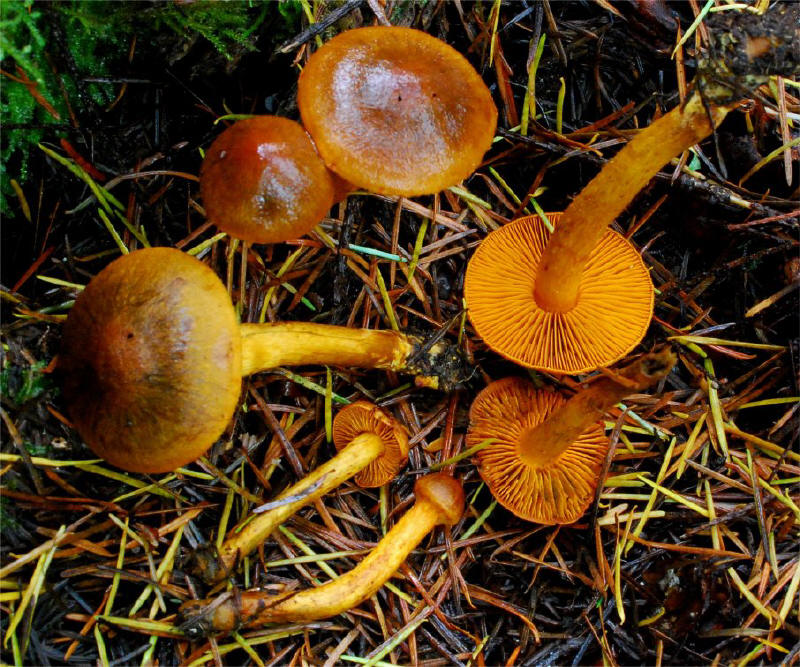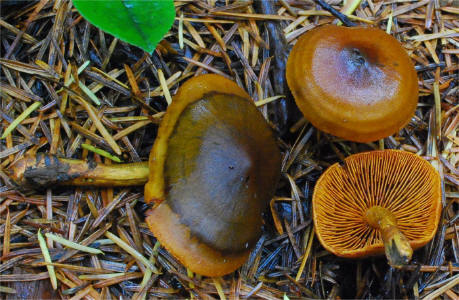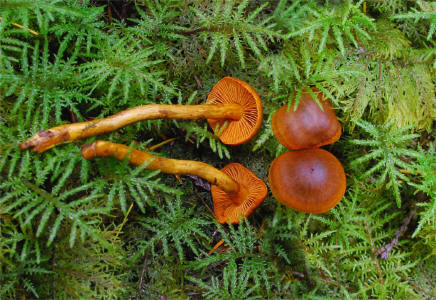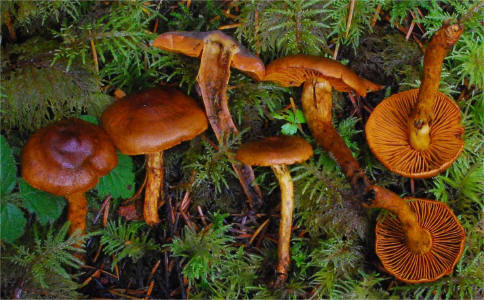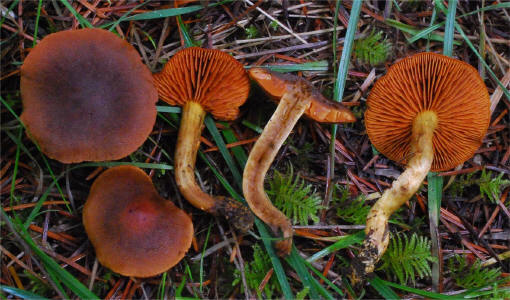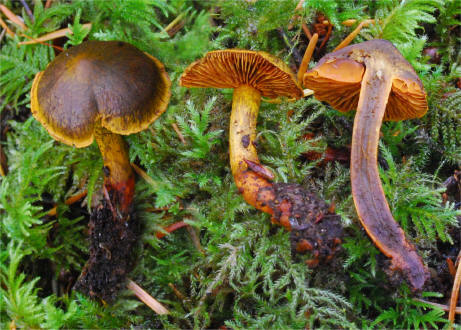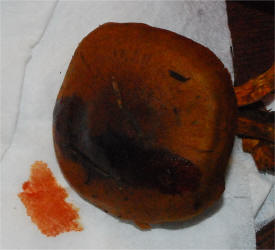
KOH5%: more orangish compared to other members of Dermocybe, where it
varies from reddish brown to purple.
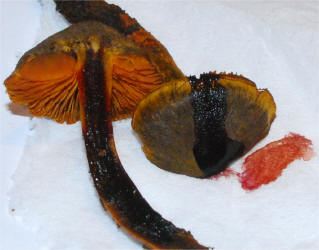 |
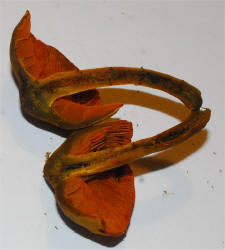
The rich olive-green pigmentation of the context is not
apparent in all fruitbodies. Typically it becomes prominent in older
fruitbodies and after collection.
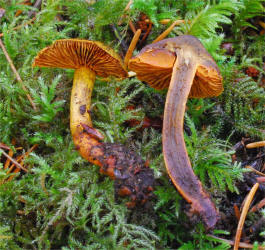 |
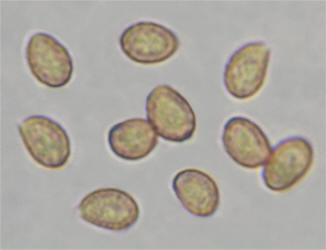
Spores: 5.5-6.5x4-4.5µ The small spores are one of the
distinguishing characteristics against other Dermocybe species.
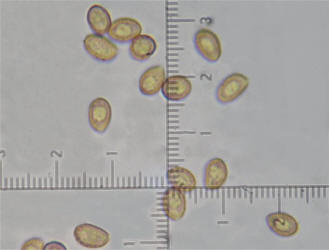 |
